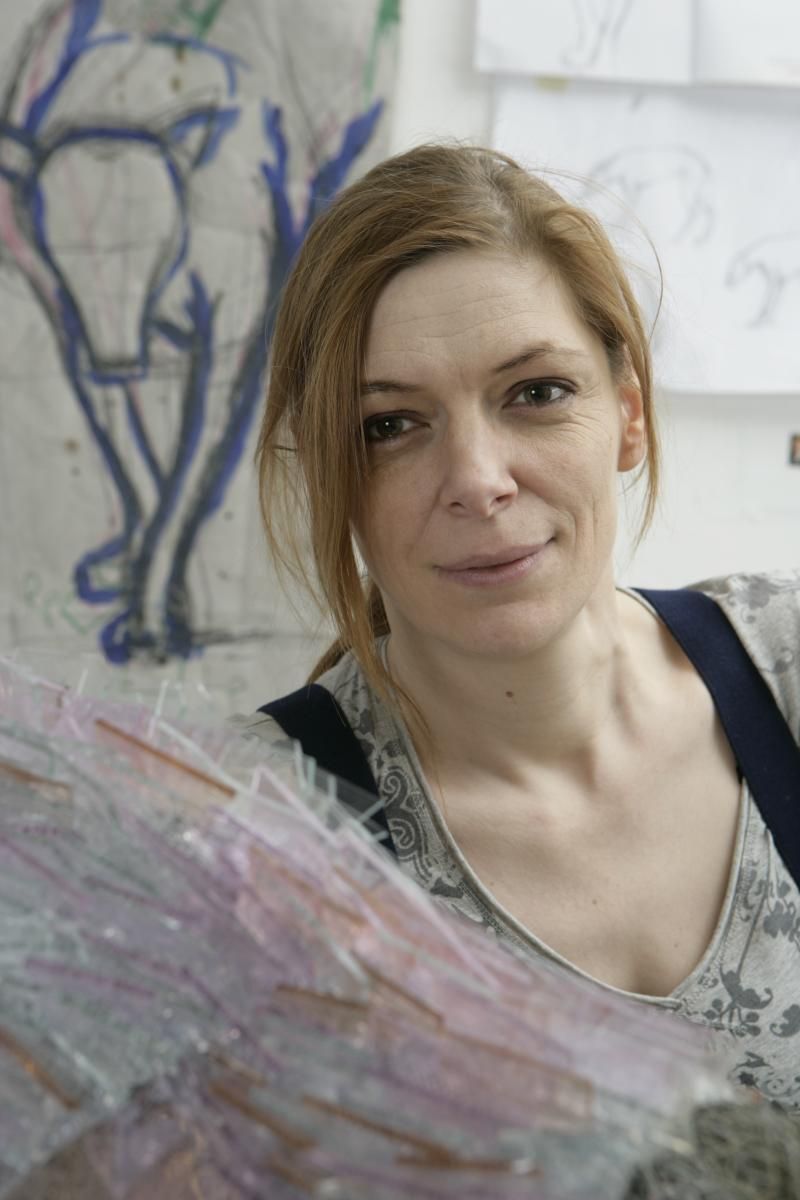Marta Klonowska - "My glass animals open a new reality."
Mediathek Sorted






























Marta Klonowska works in an area between classical and contemporary art genres. Her glass animals are classical, naturalistic sculptures in their poses, movement, expression and the distant impact of their “coats”, insofar as they translate the role models from famous paintings in museums like the Double Portrait of Henry the Pious and His Wife by Lucas Cranach the Elder (1514, Kunstsammlungen Dresden, Ill:. 1a, b) or Jan van Eyck’s The Arnolfini Wedding (1434, National Gallery London, Ill:. 2a, b) into a third dimension. But there also exist translations of animal studies by Albrecht Dürer (Ill:. 11a, b) or directly from nature like Klonowska’s Maki (2011) (Ill:. 13). Here the artist has an equally sensitive feel for nature as do sculptors working in stone or bronze. But she is also near to contemporary object and installation art. She models her animal sculptures over a framework of metal rods and nets, wire mesh and metal foil, to which she adds precisely cut coloured glass and silicone rods to make ruffled “coats”, paws, noses, ears and tails – and in the case of the Goat (2008, Ill:. 9), horns. The colours of the glass rods and the animals that they create are in no way naturalistic: cobalt blue, emerald green, black or ruby red. Along with reproductions of the paintings that are printed in the same colours, and the shoes of the portrayed people that are also made of glass, all the elements constitute walkabout installations, in other words, environments.
With the help of the rigid, unwieldy glass rods, Klonowska masterfully succeeds in recreating the smooth and equally fluffy, puffed up or bushy structures of the animal’s coats. The closer we move to the objects, the more obvious becomes the distant aloofness and dangerous quality, the rigidity, transparency and coldness of the material. It quickly becomes clear that Klonowska’s primary concern belongs to contemporary conceptual art, and not to the realistic portrayals in classical animal sculptures. For her it is all about the ambivalence between people’s appropriation of animals and the latter’s individuality: i.e. between what people make of them and their individual autonomous being.
Klonowska has precisely discovered this contradiction in paintings executed by Old Masters. Here dogs are not independent creatures but symbolise the attributes of the persons in the portrait. In van Eyck’s Arnolfini Wedding (Ill:. 2b) the dog at the feet of the freshly wed couple symbolises married fidelity. Male portraits like that of Henry the Pious of Saxony (Ill:. 1b) are mostly given hunting dogs. In the mythological scene painted by Peter Paul Rubens around 1610 (Museum Kunstpalast, Düsseldorf, Ill:. 8a), Adonis is also assisted by a hunting dog, whereas Venus is trying to prevent her lover from departing for the hunt. Aristocratic ladies like Goya’s Duchess of Alba (1795, Fundación Casa de Alba, Madrid, Ill:. 4b), Jan Verkoljes unknown Lady, holding a spaniel in her lap (ca. 1680, private collection, London, Ill:. 7), and Goya’s Marquesa de Pontejos (1786, National Gallery Washington, Ill:. 12c) are given lapdogs in order to emphasise the feminine element and symbolise sweetness, fidelity and aristocratic luxury. Animals contribute to the overall mood in landscape paintings like those of Alexander Keirincx and Cornelis van Poelenburgh, in which a scarcely visible, uninvolved goat is sitting in a mythological scene featuring Apollo and the Cumaean Sibylle in the foreground (ca.1630, Museum Kunstpalast, Düsseldorf, Ill:. 9).





















































































